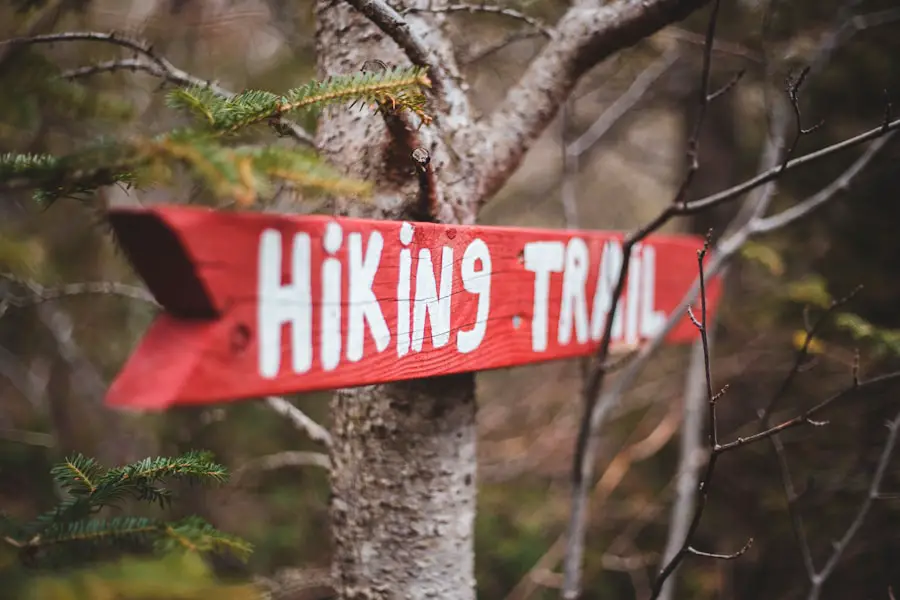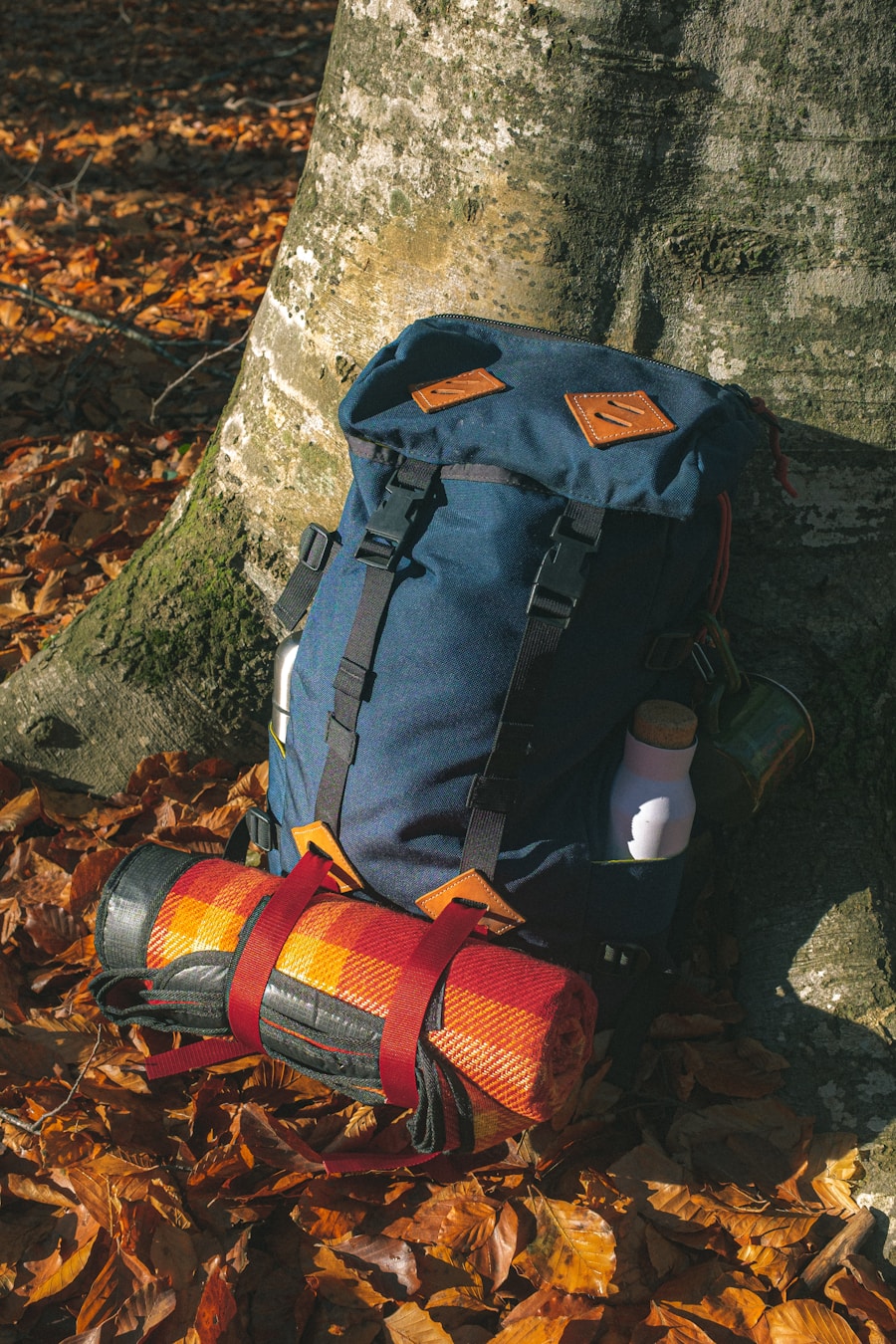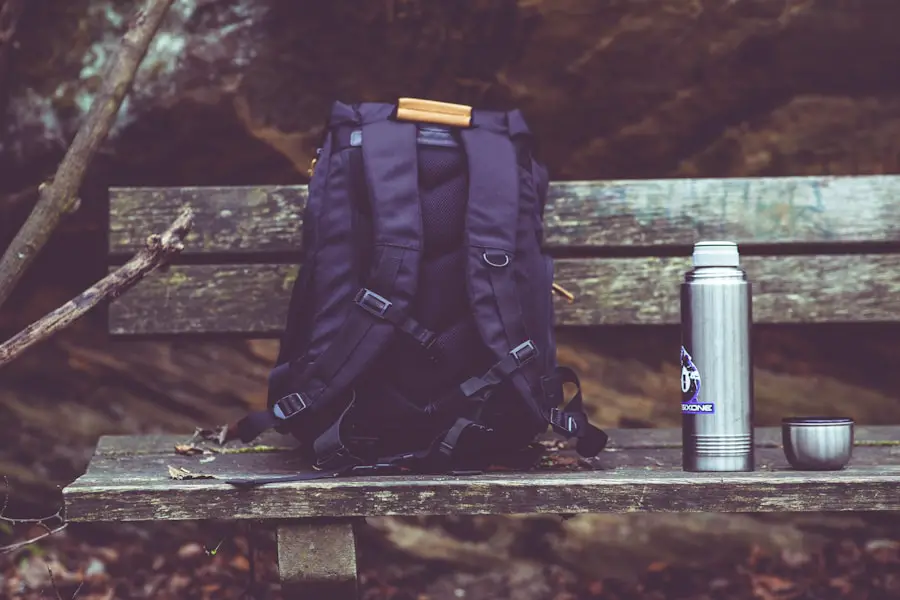Selecting the appropriate backpack is a fundamental step in preparing for any outdoor adventure, whether it be a day hike or an extended trek. The right backpack not only carries your gear but also contributes significantly to your comfort and overall experience. When choosing a backpack, consider the size and capacity that aligns with your needs.
Daypacks typically range from 15 to 30 liters, suitable for short excursions, while multi-day backpacks can range from 40 to 80 liters, designed to accommodate more extensive gear and supplies. It’s essential to assess how much gear you plan to carry, as overloading a small pack can lead to discomfort and fatigue. Another critical factor is the fit of the backpack.
A well-fitted backpack should sit comfortably on your back without causing strain. Look for adjustable straps, a padded hip belt, and a sternum strap that can help distribute weight evenly across your body. Many outdoor retailers offer fitting services, allowing you to try on various models and adjust them to your body shape.
Additionally, consider the design features such as pockets, compartments, and hydration reservoirs. A backpack with multiple pockets can help you organize your gear efficiently, making it easier to access items like snacks or maps without rummaging through your entire pack.
When it comes to outdoor footwear, the choice between boots and trail shoes can significantly impact your hiking experience. Hiking boots are typically constructed with sturdy materials that provide excellent ankle support and protection against rough terrain. They are ideal for rugged trails where you may encounter rocks, roots, or uneven surfaces.
The added height of boots can also help prevent ankle injuries during descents or when navigating tricky paths. For instance, brands like Merrell and Salomon offer boots that combine durability with comfort, featuring waterproof materials and breathable linings. On the other hand, trail shoes are designed for lighter, faster hiking and are often favored by those who prioritize speed and agility over heavy-duty protection.
They tend to be more flexible and lightweight than traditional boots, making them suitable for well-maintained trails or day hikes where the terrain is less challenging. Trail shoes often feature aggressive outsoles for better traction on various surfaces while providing a more natural feel underfoot. Popular models from brands like Altra and Hoka One One emphasize cushioning and responsiveness, catering to hikers who prefer a more minimalist approach.
Key Takeaways
- When choosing a backpack, consider the capacity, fit, and features that best suit your needs and comfort level.
- Boots provide more ankle support and protection, while trail shoes are lighter and more breathable, making them suitable for different terrains and preferences.
- Layering clothing allows for easy adjustment to changing weather conditions, ensuring both comfort and safety during outdoor activities.
- Navigation tools such as maps, compasses, and GPS devices are essential for staying on track and finding your way in unfamiliar terrain.
- Stay hydrated with water bottles or hydration systems, and pack packable snacks and meals to keep your energy levels up during your outdoor adventure.
Clothing: Layering for Comfort and Safety
The principle of layering is essential when it comes to outdoor clothing, as it allows you to adapt to changing weather conditions while maintaining comfort and safety. The base layer is the first line of defense against moisture and temperature fluctuations. Fabrics such as merino wool or synthetic materials wick sweat away from the skin, keeping you dry during physical exertion.
For example, a lightweight merino wool shirt can provide warmth without overheating, making it an excellent choice for active pursuits. The middle layer serves as insulation, trapping heat while still allowing moisture to escape. Fleece jackets or down vests are popular options for this layer, providing warmth without excessive bulk.
When selecting a middle layer, consider the climate and your activity level; a lightweight fleece may suffice in milder conditions, while a thicker down jacket might be necessary in colder environments. Finally, the outer layer protects against wind, rain, and snow. Waterproof and breathable jackets made from materials like Gore-Tex are ideal for keeping you dry while allowing sweat to evaporate.
This three-layer system ensures that you can adjust your clothing based on activity level and environmental conditions.
Navigation Tools: Maps, Compass, and GPS

Navigating the great outdoors requires reliable tools to ensure you stay on course and reach your destination safely. Traditional maps and compasses remain invaluable resources for hikers who venture into remote areas where technology may fail. A topographic map provides detailed information about terrain features, elevation changes, and landmarks that can aid in navigation.
Learning how to read a map effectively is crucial; understanding contour lines and symbols can help you anticipate challenges along your route. While maps and compasses are essential skills for any outdoor enthusiast, GPS devices have revolutionized navigation in recent years. Handheld GPS units or smartphone apps can provide real-time location tracking and route planning capabilities.
However, reliance solely on technology can be risky; battery life can be unpredictable in remote areas, and signal loss may occur in dense forests or mountainous regions. Therefore, it’s wise to carry both traditional navigation tools and electronic devices as a backup system. Familiarizing yourself with both methods ensures that you are prepared for any situation that may arise during your adventure.
Hydration: Water Bottles and Hydration Systems
| Brand | Product | Capacity (oz) | Material | Price |
|---|---|---|---|---|
| CamelBak | Chute Mag Water Bottle | 32 | BPA-Free Plastic | 19.99 |
| Hydro Flask | Standard Mouth Water Bottle | 24 | Stainless Steel | 29.95 |
| Nalgene | Wide Mouth Water Bottle | 32 | Tritan Plastic | 10.99 |
| Osprey | Hydraulics Reservoir | 2.5L | TPE Film | 39.95 |
Staying hydrated is paramount during any outdoor activity, as dehydration can lead to fatigue, decreased performance, and even serious health issues. When choosing hydration solutions, consider the type of activity and duration of your outing. Water bottles are a classic choice; they come in various sizes and materials such as stainless steel or BPA-free plastic.
A wide-mouth bottle allows for easy filling from streams or water sources while being easy to clean. Hydration systems, such as bladders or reservoirs integrated into backpacks, offer convenience for longer hikes where frequent sips are necessary. These systems typically feature a hose that allows you to drink hands-free while on the move.
Brands like CamelBak have popularized this concept with their innovative designs that prioritize comfort and accessibility. Regardless of the method you choose, ensure that you have a plan for water purification if you intend to source water from natural bodies; portable filters or purification tablets can make unsafe water safe to drink.
Nutrition: Packable Snacks and Meals
Proper nutrition is vital for maintaining energy levels during outdoor activities. When planning meals and snacks for your adventure, focus on lightweight options that provide sustained energy without weighing you down. High-calorie snacks such as trail mix—comprised of nuts, dried fruits, and sometimes chocolate—are excellent choices due to their compact nature and nutritional density.
They offer a quick energy boost when you need it most. For longer trips where meals are necessary, consider dehydrated or freeze-dried meals that only require hot water for preparation. Brands like Mountain House offer a variety of options that cater to different dietary preferences while being easy to pack and prepare.
Additionally, energy bars can serve as convenient meal replacements or snacks; look for bars with whole ingredients that provide a balance of carbohydrates, protein, and healthy fats. Planning your nutrition carefully ensures that you remain fueled throughout your journey.
Safety Essentials: First Aid Kit and Emergency Supplies

Safety should always be a top priority when venturing into the wilderness. A well-stocked first aid kit is an essential item that every hiker should carry. Basic supplies should include adhesive bandages, antiseptic wipes, gauze pads, adhesive tape, pain relievers, and any personal medications required by members of your group.
It’s also wise to include items like blister treatment supplies and an emergency blanket for unexpected situations. In addition to a first aid kit, consider carrying emergency supplies such as a whistle, multi-tool, fire-starting materials, and a flashlight or headlamp. A whistle can be invaluable in signaling for help if you become lost or injured; its sound carries much farther than the human voice.
A multi-tool provides versatility for various tasks ranging from gear repairs to food preparation. Fire-starting materials ensure you can create warmth or signal for assistance if needed. By preparing adequately with safety essentials, you enhance your chances of handling emergencies effectively.
Additional Gear: Trekking Poles, Headlamps, and Sun Protection
In addition to the core gear mentioned earlier, several additional items can enhance your outdoor experience significantly. Trekking poles are one such accessory that many hikers find beneficial; they provide stability on uneven terrain and reduce strain on joints during descents. Adjustable poles allow users to customize their height based on personal preference or trail conditions.
Headlamps are another essential piece of gear for any outdoor enthusiast who may find themselves hiking in low-light conditions or at night. Unlike handheld flashlights, headlamps free up your hands for other tasks while providing consistent illumination where you need it most. Look for models with adjustable brightness settings and long battery life to ensure reliability during extended outings.
Lastly, sun protection cannot be overlooked when spending time outdoors; UV rays can cause severe skin damage even on cloudy days. Broad-spectrum sunscreen with an SPF of at least 30 should be applied generously before heading out and reapplied throughout the day as needed. Additionally, wearing a wide-brimmed hat and UV-blocking sunglasses can provide extra protection against harmful rays while keeping you comfortable during your adventure.
By carefully considering each aspect of your gear selection—from backpacks to safety essentials—you can ensure a successful outdoor experience that prioritizes comfort, safety, and enjoyment in nature’s embrace.
When preparing for a hiking trip, it’s important to consider all the necessary gear to ensure a comfortable and enjoyable experience. One essential item to bring along is a rechargeable hand warmer, which can provide much-needed warmth during chilly hikes. For those looking to keep their feet cozy and odor-free, investing in a pair of merino wool travel socks is a great idea. Additionally, if you’re planning to hike with young children, a double travel stroller can make the journey much easier. Check out this article on the 5 Best Double Travel Strollers for Spring Adventures for some top recommendations.
FAQs
What should I take when hiking?
When hiking, it’s important to bring essential items such as water, food, navigation tools, first aid kit, appropriate clothing, and emergency supplies.
How much water should I bring when hiking?
It’s recommended to bring at least 2 liters of water per person for a day hike. In hot or strenuous conditions, you may need to bring more.
What kind of food should I bring when hiking?
Pack lightweight, high-energy snacks such as trail mix, energy bars, and dried fruits. For longer hikes, consider bringing sandwiches, wraps, or other portable meals.
What navigation tools should I bring when hiking?
A map and compass are essential for navigation when hiking. Consider also bringing a GPS device or a smartphone with a reliable GPS app.
What should I include in a first aid kit for hiking?
A hiking first aid kit should include items such as bandages, adhesive tape, antiseptic wipes, pain relievers, blister treatment, and any personal medications.
What clothing should I wear when hiking?
Wear moisture-wicking and breathable clothing, and dress in layers to adjust to changing weather conditions. Don’t forget to wear appropriate footwear and a hat for sun protection.
What emergency supplies should I bring when hiking?
Emergency supplies for hiking should include a whistle, a flashlight or headlamp with extra batteries, a fire starter, a multi-tool, and a space blanket or emergency bivy.
